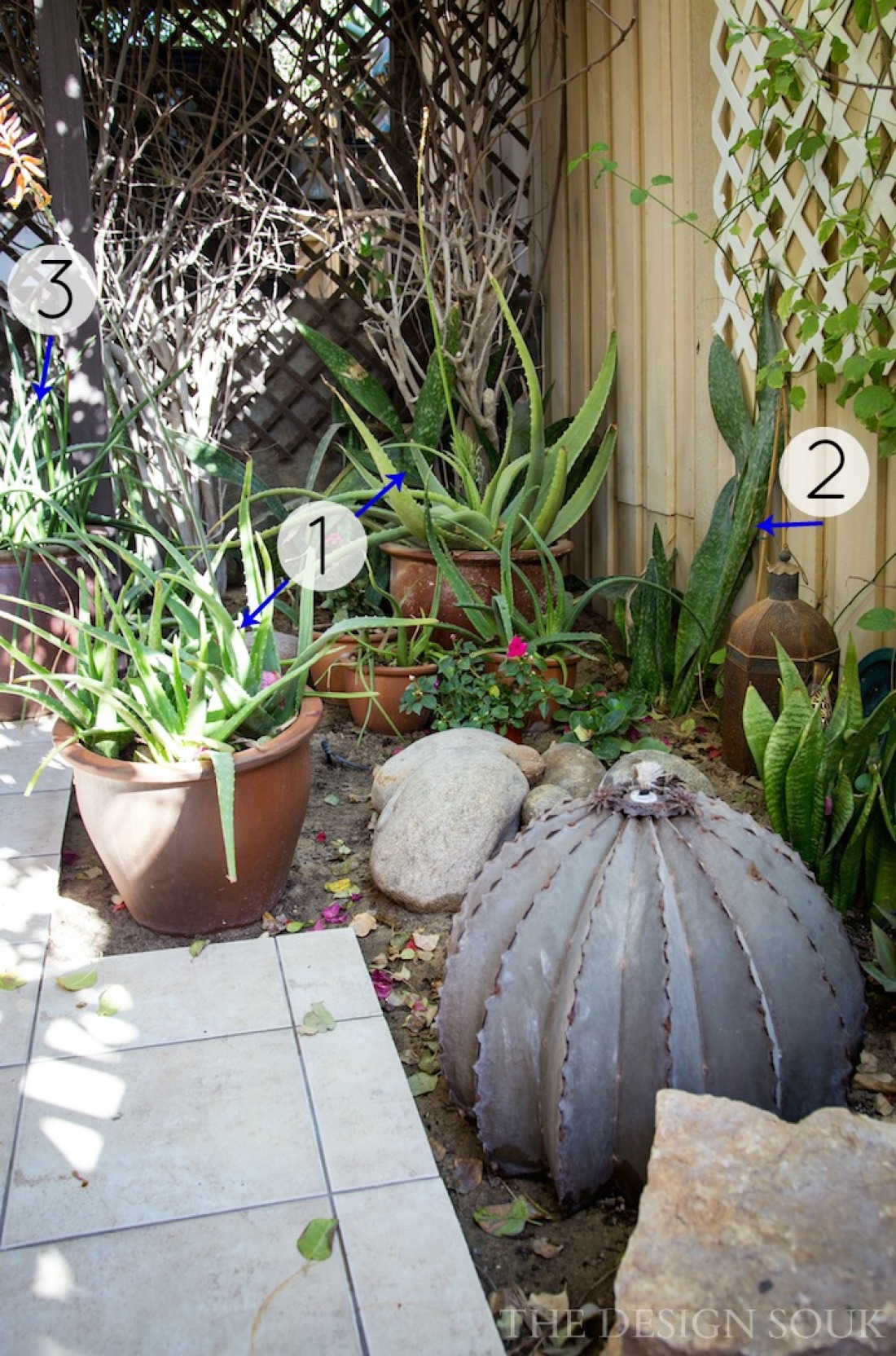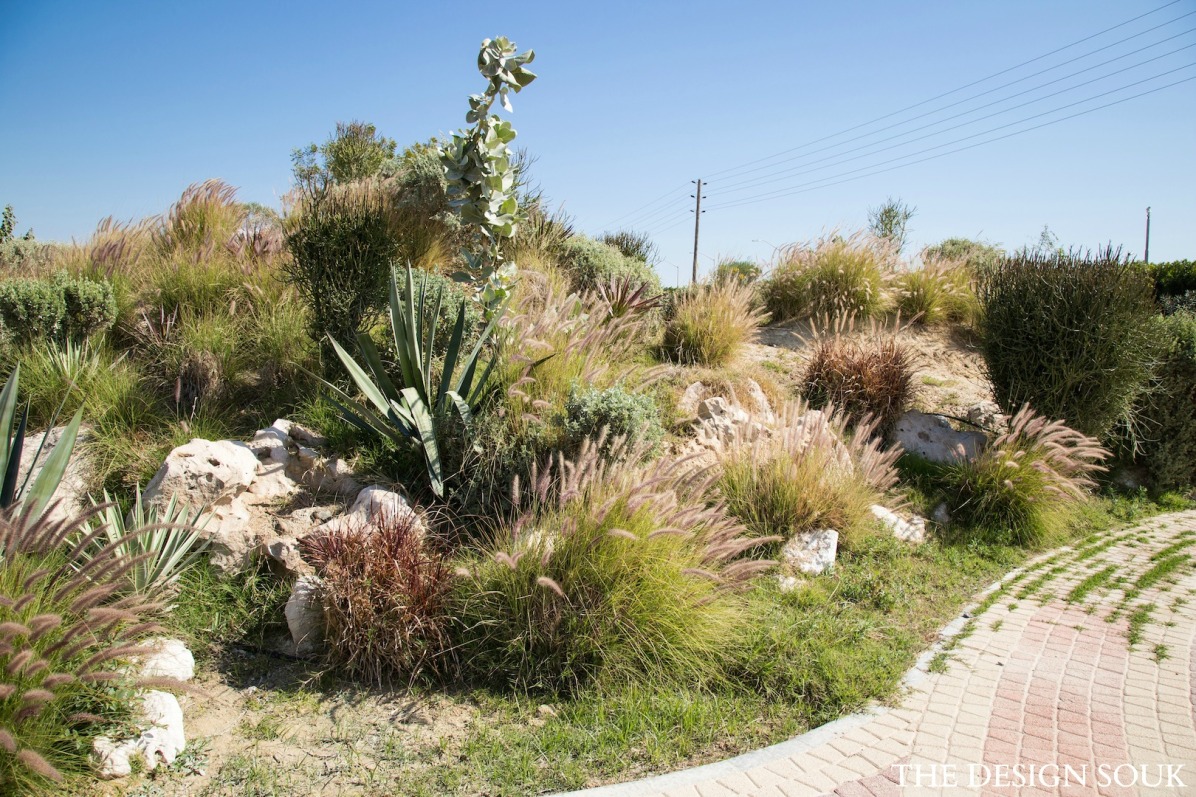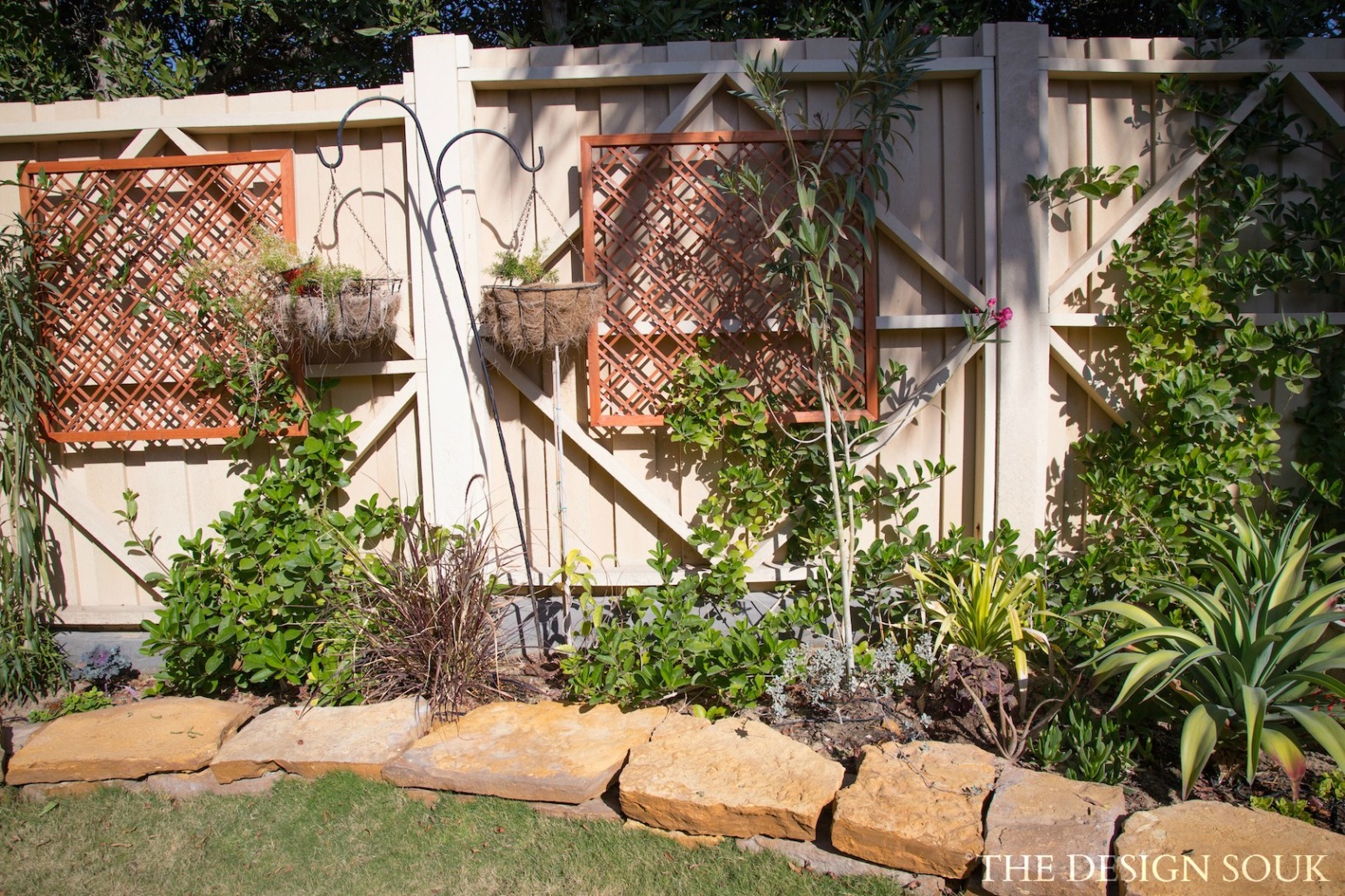If you’re even slightly interested in gardening, you’ve probably heard of the environmentally-friendly concept of “xeriscape/smartscape” yards by now. The concept is built around the idea that you should reduce the amount of green lawn in the landscape, and use hardy native plants that are generally better suited to the climate.
Benefits of xeriscaping?
- You can reduce water usage by 50-75%
- Water requirements for a xeriscape yard are low. Simple irrigation systems, like bubblers, are usually enough for the space.
- Using native plants eliminates any need for chemical supplements – like pesticides and fertilizers – and sufficient nutrients can be found in healthy organic soil.
- The use of gas mowers is minimized – less pollution – since the turf area is so much smaller.
- Adding native plants, trees, and shrubs, are also great ways of offering local wildlife a home.

Photo Courtesy of Julie Owens Photography
But to be completely honest, it’s really hard to think about how to design an actual xeriscape yard. Like a lot of people, I always thought that a xeriscape yard meant rocks, sand, succulents and cactuses…
So to better help me understand this whole process, Julie Owens Strawn – fabulous photographer/environmentalist/xeriscape practitioner – was sweet enough to talk to me about how she put together her beautiful xeriscape yard! I was so happy to see her outdoor space because she made me realize that you can use less water and still have a green yard – amazing!
“Most people don’t really understand it. They think it’s just rocks and cactus. It can be that, but there are a lot of plants that are xeriscape type plants as well.”
What Julie did in her yard…
Julie had a seriously problematic yard. Not only was the entire yard on a huge slant, but she also had crazy irrigation issues because of high water pressure in the area. Her sprinklers kept blowing out, and whatever she planted, died from unstable conditions.
So she then asked some of her landscape designer friends to help her create a xeriscape yard so that she could better maintain her yard!
And just look at what came out of that…

You can still have a water fountain using a good ol’ water pump. It recycles the same water over and over again, and you just need to top it off once in a while!
What Plants She Used…

1. Aloe Vera, 2. Sansivera/Mother’s Tongue, 3. Another variant of Sansivera. You can’t see it here, but there is a huge bougainvillea crawling up the pergola!

1. Upright Jasmine Shrub, 2. Agave Species, 3. Pennisitum (Green Fountain Grass), 4. Pandanus, 5. Ice Plant, 6. Riyadh Stone, 7. Japanese Grass, 8. Varigated Agave
How To Create A Xeriscape Yard…
She did this by putting in a hardy and low maintenance grass – Japanese grass – which needs about 10 minutes of water (twice a day) in the winter. In the summer, it requires between 10-15 minutes of water (twice a day). It’s really just better to install an irrigation system since leaving a hose on for hours wastes SO much water!
Also, when leveling out her yard, Julie used concrete to build an elevated patio with a lovely brick fire pit. She wanted to create a useable space, so that she could spend a lot of time outside the house as well.
The rest of her space was filled with flower beds (for seasonal color), ground cover, and various types of pavers (hardscaping) to reduce her overall turf.
The truth is that we live in a country where the climate is extremely harsh. What survives is highly dependent on temperature, how much shade your yard gets, the time of the year, how sensitive your plants are, etc. For that reason, you should just try out different plants to see what works. Julie tried tons of different options before she found the right plants for her yard.
Also, make sure you plant in December/January so that plants have the time to establish themselves. Some plants are harder to kill – Aloe Vera,Yucca, or most cacti – but it’s worth testing out how well your “xeriscape-friendly” plants do in various parts of your yard.
The 7 Principles of Xeriscape:
Plan it Out: Consider the cost, function, looks, maintenance requirements, water usage and energy efficiency.
Plant plants that require less water: You can get these kinds of plants in a variety of shapes, sizes and colors. This way you can add shade and/or seasonal color to make it visually more appealing.
Reduce the size of the turf: You can retain some open space for functionality and to make your yard visually more appealing. As Julie said, your lawn space should be about 30% of your entire yard.
Irrigate efficiently: Plant your trees, shrubs, ground covers adn turf areas each on different valves so that you can better control and time their irrigation. You will need to adjust your irrigation schedule several times a year. Drip irrigation or bubblers are much more efficient at delivering water directly to the plant’s roots than sprinklers.
Improve the soil: Ideal soil drains quickly and stores water at the same time. Increase the amount of organic material in your soil and keep it well aerated. Dhahran Garden Group will be running composting classes this year, so keep an eye out for that!
Use mulch or ground cover such as rocks, gravel or low growing plants: They cover the soil, reduce evaporation and cool the soil beneath. This helps stop weak growth and erosion.
Maintain your Xeriscape: Save water, time and money.
How to Save Water…
- Water around sunset and sunrise, when temperatures and wind speeds are the lowest
- Group plants with similar watering needs in the same areas
- Add mulch and ground cover to minimize evaporation and help the soil absorb and store its water
- Adjust sprinklers with the season to avoid over watering sidewalks and driveways
- Repair leaks promptly
- Ask your gardener to NOT hose off your sidewalk on a daily basis












 Arabian SAS
Arabian SAS A Shabby Chic Home & Garden Tour
A Shabby Chic Home & Garden Tour Exterior Door Makeover!
Exterior Door Makeover!

Maggie Allen says
Wow, Julie’s yard looks absolutely amazing! I have always been interested in a xeriscape yard, but I also want to be sure that it will look good, too! This post has definitely inspired me, and I think I’ll start looking at some more inspiration. If I start by planning which third of the yard will have turf, I think I’ll be able to make something that will work. And if I get stuck, I’ll be sure to start looking for a professional to help me out!